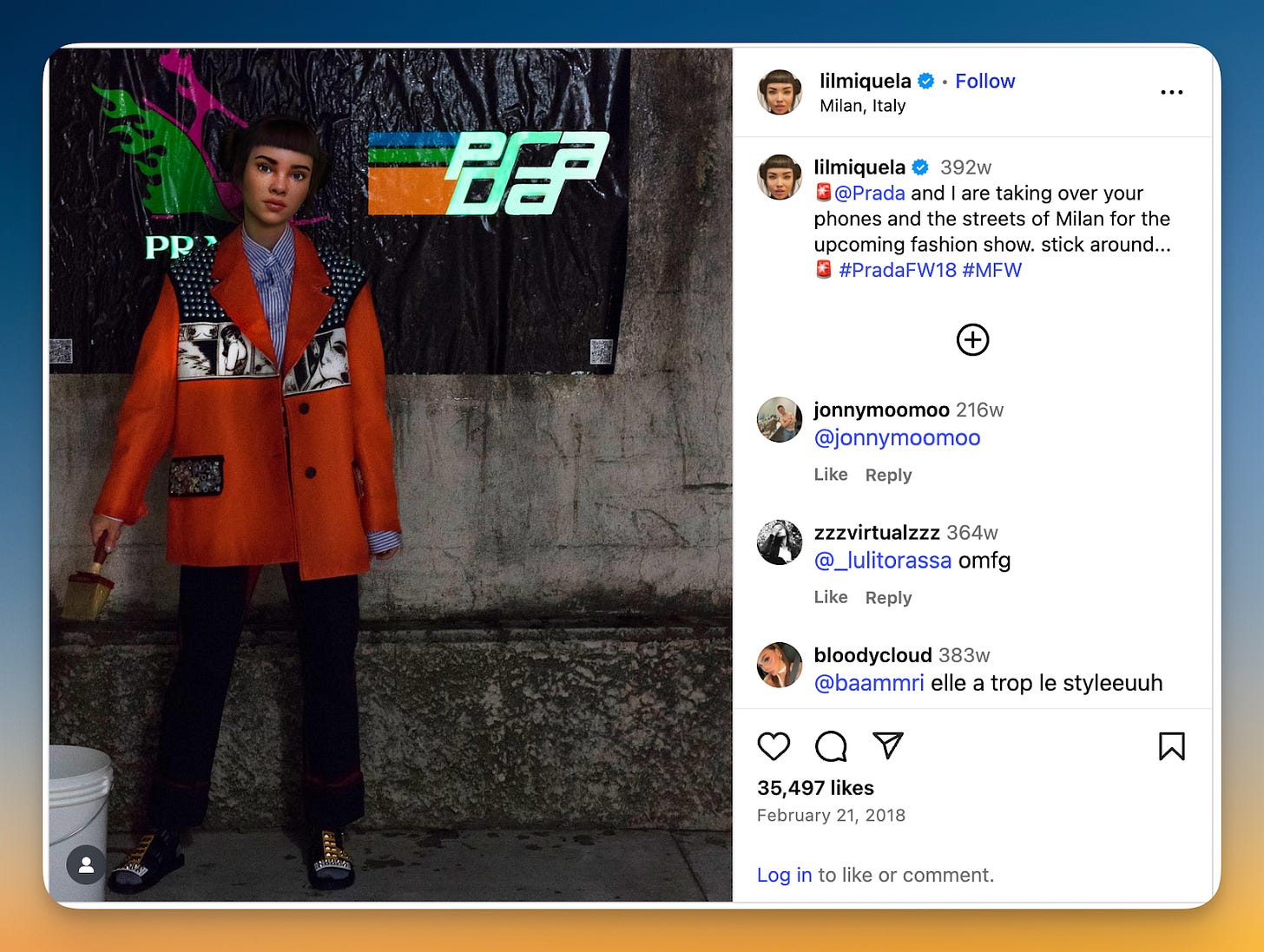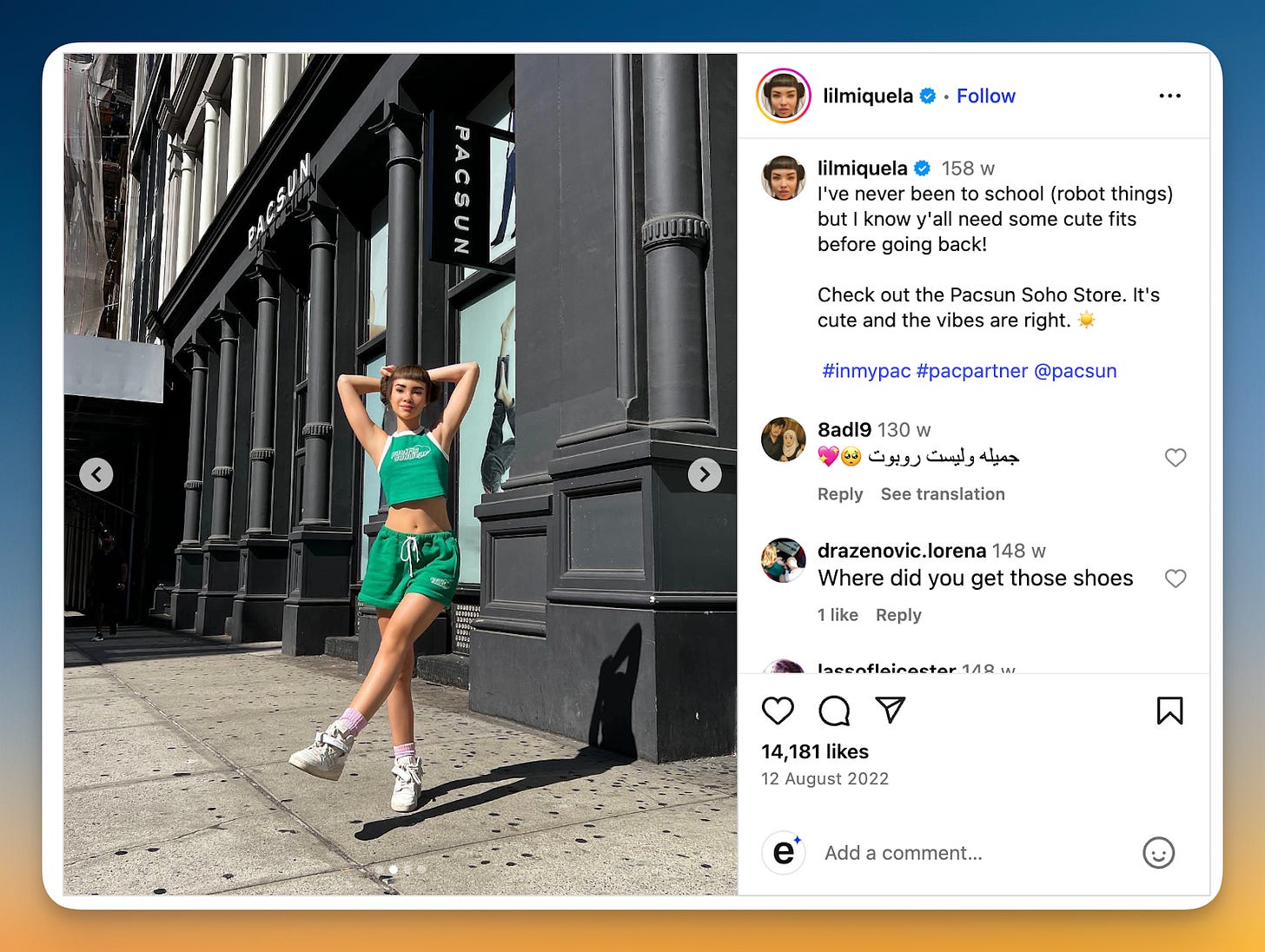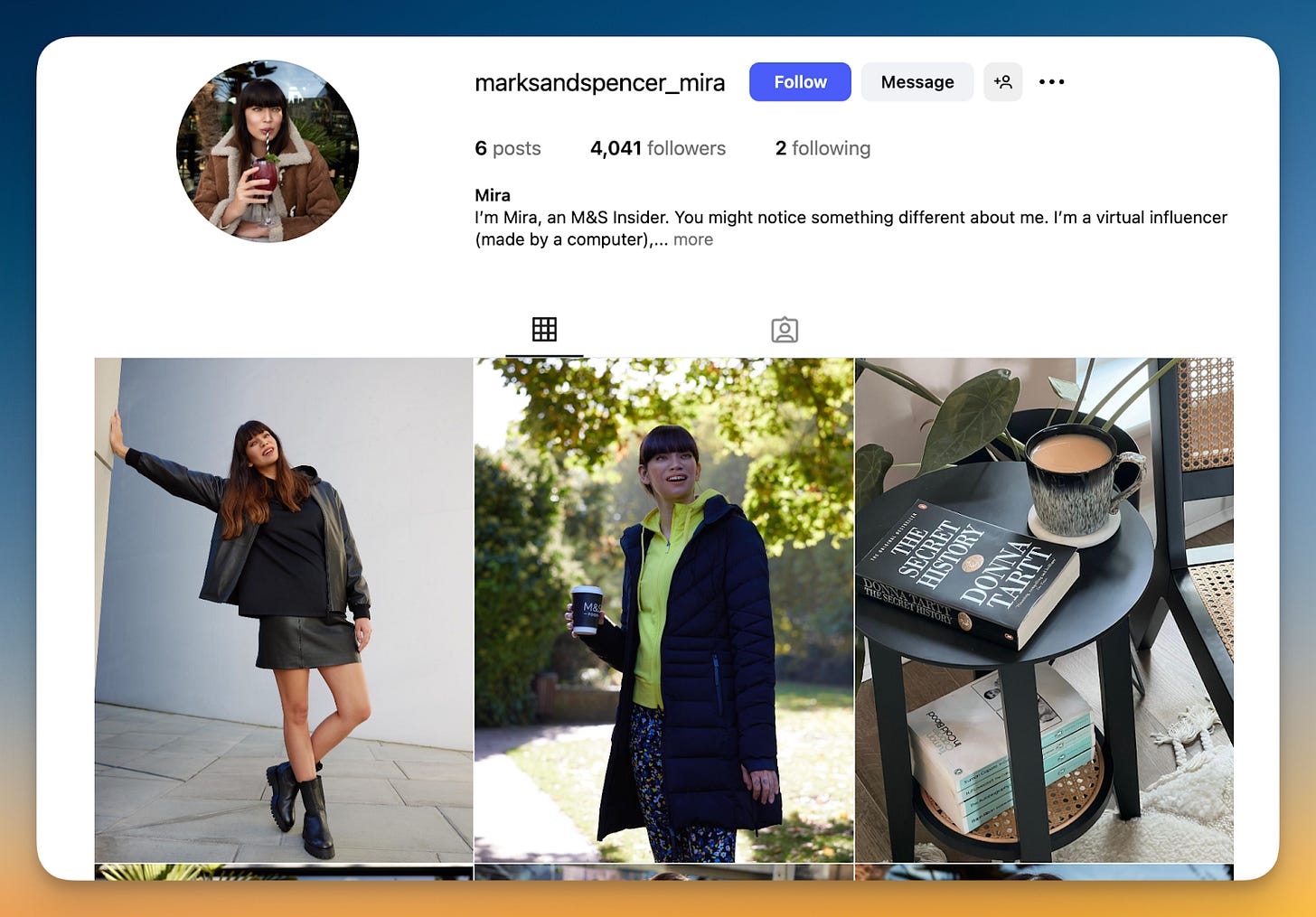Are AI Influencers the Future of Marketing?
Discover how AI-generated influencers are reshaping retail marketing strategies.
What if your next influencer wasn’t even human?
Imagine a digital persona with millions of followers, collaborating with top brands like Prada and Dior. AI-generated influencers like this are transforming the marketing world, offering a fresh approach for brands to engage with consumers. With the rise of virtual personalities like Lil Miquela, Shudu, and Lu do Magalu, brands are entering a new era of digital influencers that bring innovation, consistency, and creativity to the table.
So, here’s the big question: Are AI influencers the future of retail marketing, or just another passing trend?
The Rise of AI Influencers and Why Brands Are Embracing Them
AI-generated influencers like Lil Miquela and Shudu are disrupting retail marketing. These CGI personas have gained massive followings, with Lil Miquela collaborating with over 90 brands in just one year and reaching nearly 2.5 million users.
This trend is far from temporary. In fact, 58% of U.S. consumers follow at least one virtual influencer, and 35% have made purchases based on a virtual influencer's recommendation. This demonstrates how virtual influencers are not just capturing attention, but also driving meaningful sales and customer engagement.
The appeal of these virtual influencers lies in the control and consistency they offer. Unlike human influencers, who can evolve and shift focus, virtual influencers stay on-message and can be tailored to fit any brand’s narrative. This makes them ideal for long-term campaigns where consistency is key.
DTC brands are especially drawn to virtual influencers for their cost-efficiency and scalability. Once created, virtual influencers work 24/7, across borders, and can be seamlessly localized for different markets. This allows brands to execute global campaigns without the logistical headaches of human influencers, such as scheduling and travel. For example, Magazine Luiza’s Lu do Magalu has become a recognizable figure in Brazil but also has the potential to expand globally.
Moreover, virtual influencers often see higher engagement rates, with an average of 5.9%, nearly three times higher than the typical 1.9% for human influencers. This higher engagement is linked to the novelty of virtual personas, which draw in audiences and generate stronger brand interaction, leading to better ROI.
As a result, brands are increasingly embracing virtual influencers as a scalable, cost-effective solution that drives engagement and ensures total control over messaging.
Examples of Brands Using AI Influencers
Several leading brands are already tapping into the power of virtual influencers to enhance their marketing campaigns. Here are some standout examples:
Lil Miquela: With 2.5 million followers on Instagram, Lil Miquela has collaborated with top-tier brands like Prada, Dior, and Pacsun. Her seamless integration into high-fashion campaigns proves the power of virtual influencers in luxury branding
Shudu: The world’s first digital supermodel, Shudu has worked with Balmain and featured in Vogue. She’s a prime example of how virtual influencers can be used in high-fashion and beauty sectors to appeal to modern, tech-savvy consumers
Lu do Magalu: Created by Brazilian retailer Magazine Luiza, Lu has become a national icon with 8 million followers on Instagram. She began as a virtual store assistant and has now evolved into a brand ambassador, engaging customers with personalized, always-on content
M&S and PrettyLittleThing: These retail giants have launched their own virtual models, Mira for M&S and digital models for PrettyLittleThing to appeal to younger shoppers and showcase their products in fresh, innovative ways
How You (DTC Brands) Can Get Started with Virtual Influencers
As virtual influencers continue to gain traction, here’s how DTC brands can take advantage of this trend:
1. Start with Existing Virtual Influencers
Rather than building a virtual persona from scratch, partner with established virtual influencers who already have loyal audiences. This gives you a low-risk way to test the waters and engage with their followers.
2. Make Sure the Persona Matches Your Brand
If you’re creating your own virtual influencer, ensure they reflect your brand’s personality and values. A strong backstory and distinct character traits will help the avatar connect with your audience.
3. Be Clear About the Virtual Nature
Transparency is key. Let your followers know they’re engaging with a virtual character. This builds trust and prevents confusion. Simple labels like “Virtual Influencer” in the bio go a long way.
4. Play to Their Strengths with Creative Content
Virtual influencers are ideal for visual, out-of-the-box campaigns. Use them to showcase products in unique and imaginative ways, like doing stunts or showing off multiple looks in a single post, things that wouldn’t be possible with human influencers.
5. Mix It Up with Human Influencers
Don’t be afraid to use a hybrid approach. Pair a virtual influencer with a human one to blend the innovation of AI with the authenticity that human creators bring. It’s the best of both worlds!
6. Keep an Eye on Engagement and Feedback
Track your campaigns closely. Look at the engagement stats and feedback from followers. If they’re loving the virtual content, lean into it more; if not, refine your approach.
Looking Ahead with AI Influencers
AI-generated influencers are more than just a passing trend, they’re quickly becoming a powerful tool in retail marketing. As brands continue to experiment with these virtual personas, the key is to use them thoughtfully: combining the creativity of AI with the authenticity of human influencers for a more dynamic approach.
While virtual influencers offer cost-effective, scalable, and innovative solutions, they’re most effective when used alongside real human creators. The future is bright, and those who embrace the best of both worlds will be leading the charge in this new digital marketing era.
Are you ready to bring an AI influencer into your strategy? The possibilities are just beginning.
That’s a wrap for today! If you found this newsletter helpful, feel free to share it with your team or network. I’d love to hear your thoughts, do you think AI influencers are here to stay in marketing? Drop a comment below!
Until then,
- Sid
AI in Retail This Week
Eagle Eye and Cognizant Partner for Real-Time Loyalty: Eagle Eye and Cognizant have announced a partnership to deliver real-time AI-powered loyalty and personalization at scale for global retailers. This collaboration aims to redefine customer engagement across retail, travel, and hospitality sectors, enabling faster deployment of cutting-edge loyalty and personalization solutions.
Generative AI Drives Online Shopping Traffic: Adobe reported a significant surge in online shopping traffic driven by generative AI, with traffic to retail websites rising 1,100% in January and 3,100% in April compared to July 2024. Consumers using generative AI to shop online spend 32% more time on sites and view 10% more pages, indicating a more engaged and research-focused shopper .
ICA Gruppen Ramps Up AI Use: Swedish retailer ICA Gruppen is increasing its use of AI across various projects and solutions. The company is integrating AI into its operations to enhance efficiency and customer experience, reflecting a broader trend of AI adoption in the retail industry.








